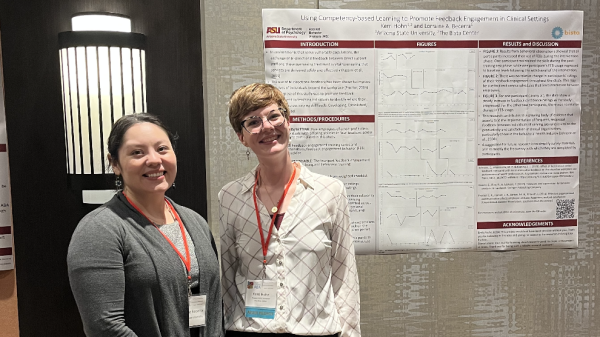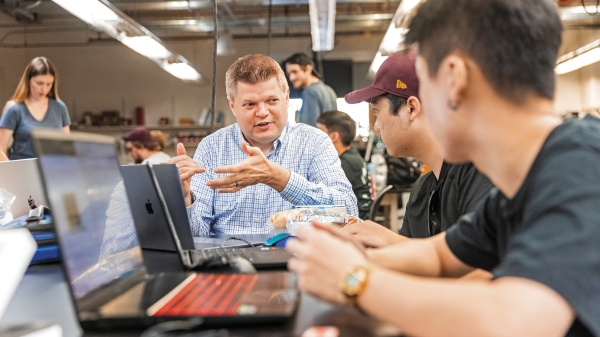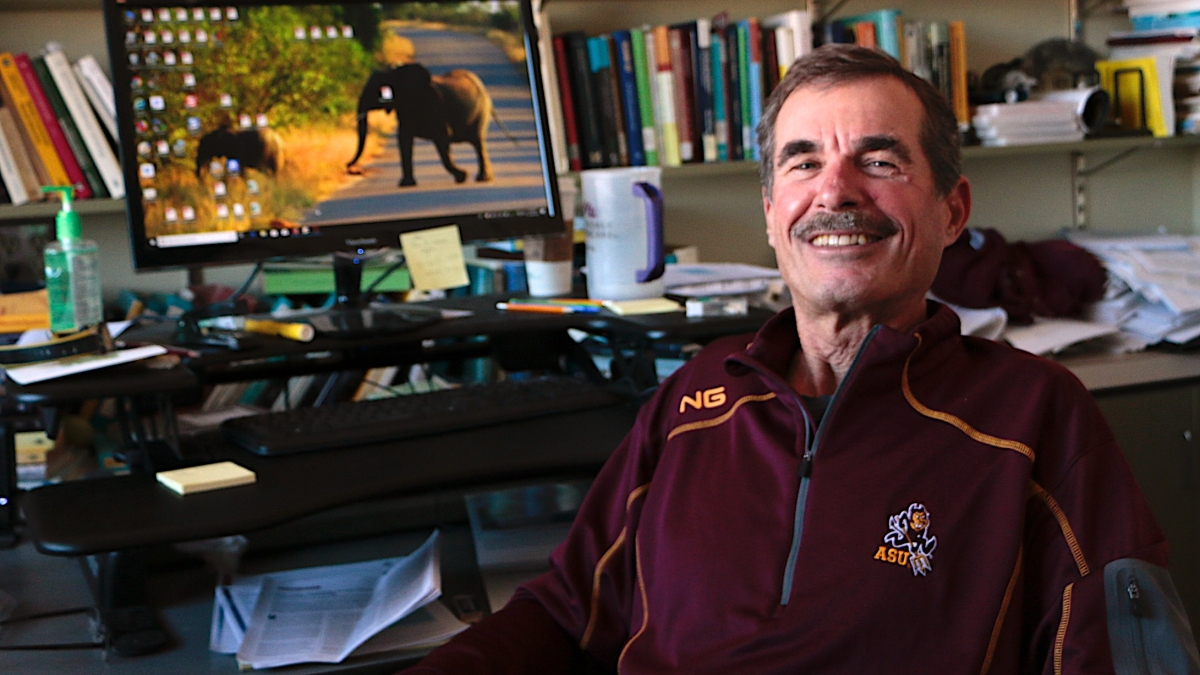Arizona State University Professor Hal Smith has been named a fellow of the prestigious American Association for the Advancement of Science (AAAS) in recognition of his pioneering efforts in biological sciences.
The AAAS, publisher of the journal Science, is the world’s largest general scientific society. Election as a fellow is an honor bestowed upon AAAS members by their peers for their scientifically or socially distinguished efforts to advance science.
Smith grew up in Cedar Rapids, Iowa, a place he describes as “a nice town.”
During his early years at the University of Iowa, he struggled with social science and English courses but really enjoyed physics and math. He didn’t have any future employment in mind, but just wanted to keep learning more.
He thought he would go to graduate school, but then the Vietnam War intervened. After a couple of years serving in the military, he went back to look for his old professor in physics but could not find him. He then found one of his old mathematics professors who greeted him with an offer as a teaching assistant. “So I went to graduate school in math,” he chuckled.
His adviser was going into biology and that influenced Smith and other graduate students to pursue different areas of biological sciences.
Smith is currently a professor in the School of Mathematical and Statistical Sciences. His research focuses on differential equations, dynamical systems and their applications to the biological sciences.
He is primarily involved with providing tools for the kinds of mathematical models that come up in population biology, ecology and epidemiology.
He writes mathematical models in the form of differential equations to try to capture the interactions of populations, or diseases, where the focus is usually on what is happening to the numbers. The models try to determine if the numbers reach some sort of steady state equilibrium over a long time, or if they oscillate.
"If they have competing species, which ones are going to win and which ones are going to become extinct? Will a disease die out, or will it take off and form a big epidemic?" Smith explains these are the types of mathematics he tries to tease out of the models and interpret for biologists.
Some of Smith’s most recent work has been modeling what happens inside the body when it is infected with HIV. When the virus gets in the body, it attacks certain immune cells. Then the virus replicates very fast and very sloppily and makes many mistakes when it copies its genome. Each mistake then allows for a variant of the virus.
“Math can go sometimes where the biologists can’t yet go." — Hal Smith
“The virus inside of the blood is not homogenous, it is a collection of quite a few viral types, which presents the immune system with difficulty," Smith said. "The immune cells have to recognize each particular variant of the receptor that the virus presents on the cell that it affects. And so you have all these variants of the HIV virus in the body, each one reproducing at different rates, and then the immune system has to provide immune cells that are capable of recognizing these different virus types.
“It would be useful to know which viral types might become dominant. And what the resulting immune types would be eventually, such that one might figure out how to attack the most dominant viral type, or at least influence this warfare inside the body in some way.”
Math is very useful to this process by creating specialty tools.
“It is very difficult for biologists to quantify what is really going on inside a human body. Where mathematics has no trouble imagining — with lots of assumptions, of course, that mathematics always make, that sometimes drive biologists crazy — but mathematicians can create mathematical models of the process that are reasonably faithful to the biology and explore questions that are very difficult for the biologists to measure. Math is providing the tools to measure and quantify these things," Smith said.
“Math can go sometimes where the biologists can’t yet go," he said. "The caveat is that one makes these assumptions that the blood is well-stirred. You can take away complexities using math. The human body is very complicated — the different compartments where the viruses go in the body, where the blood is, where the lymph nodes are, these organs are difficult to access and have strange geometries — all these are details that get in the way perhaps of understanding.
“Math ignores these details and tries to just simplify the interactions. Here are the results of that. If the results don’t correspond with the biological reality, then we have to go back and add some of the complexity back into the model. But at least you get a start. Then the biologist will complain, ‘Oh, you missed this.’ Then we ask, ‘What’s the most important thing we missed?’ Let’s now throw that in and try again. Go back and forth and try to learn more.”

When not solving math problems, Smith loves to get outdoors. He rides his bike to work, swims to stay in shape and enjoys hiking.
After earning his PhD, he did his postdoctoral research in Utah, and “getting away from the cornfields of Iowa and finding out there were these mountains … you can’t hike in Iowa — you hike through the rows of corn,” he said with a laugh.
“Once I discovered you could hike in the mountains, I just wanted to stay out in the West where there were mountains. Then I got an offer from ASU.”
Smith started at Arizona State University in August 1979. He has seen many changes over those 40 years, including the growth of the university from about 30,000 students to now nearly 100,000 on all campuses.
“The university has improved so much. The research strength of our school and the the grant funding has increased dramatically,” Smith said.
“Each president has lifted the place higher.”
“Now we have so many new and exciting faculty members," he said. "I’m motivated by what the younger faculty are doing, and attending the seminars that they’ve organized because they are doing things that are right on the cusp of where science is moving.
“And I am having a lot of fun learning from them.”
More Science and technology

Miss Arizona, computer science major wants to inspire children to combine code and creativity
Editor’s note: This story is part of a series of profiles of notable spring 2024 graduates. “It’s bittersweet.” That’s how…

ASU applied behavior analysis program recognized in Four Corners region
Helping students with learning disabilities succeed in school and modeling effective communication skills are just two examples…

Redefining engineering education at West Valley campus
Editor's note: This story originally appeared in the summer 2024 issue of ASU Thrive magazine. What makes the School of…
